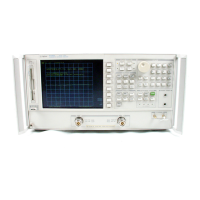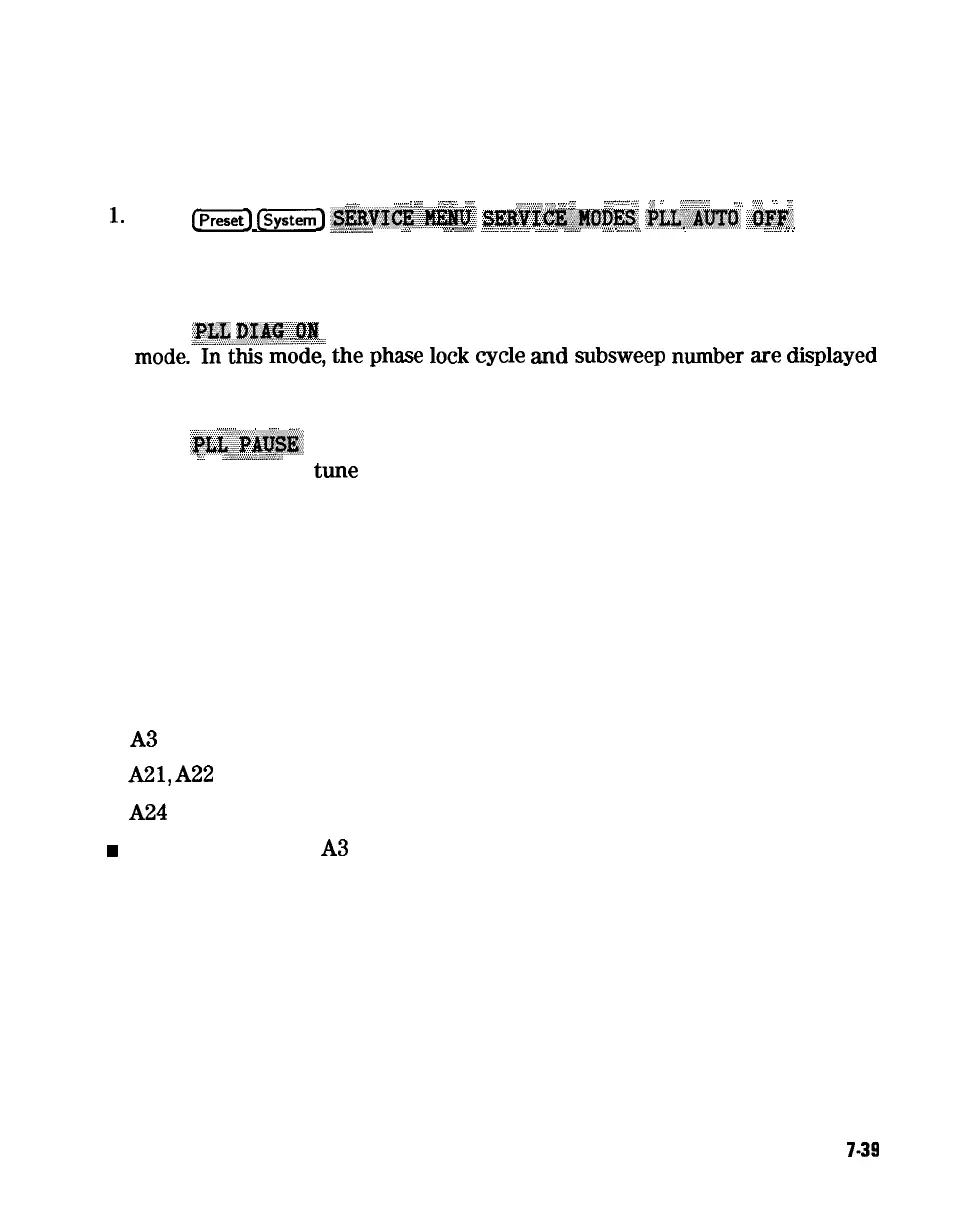Phase Lock Diagnostic Routines
Perform the following steps to determine at what frequencies and bands the
phase lock problem occurs
_.,,. . . . . . . .
,,,......
:
..::.:
.:;:
::.
:::
/
.
...::::. . . . . . . . . . . . . . . .
:,:s’::::,:,:,:,:,
..,.,.,
.:...
<<:.
: . . . .
“’
.i...?
..q.
”
I
-:..<.+-
..:..:
../,
.:,*
‘i
.<:
1.
Press
(SJ
Ls)
~~~~~~,~~
~~~~~~~~~~~~~.
:3?LX&#JJllt
.~@I$$$~.
to
_..;~~...:...~...~/./
.
..A
/
..A...........
~~.~~
ii
.%w..::::.
.:::::.:
.:::-
:::..::
.
..d....
..A.....
.
..u..i
. . . .
..A...
i
...,....
.:.,
. . . . . . . . . . . . . .
L
ii....................................
.::..x
ii
i
switch off the automatic phase-locked loop. Normally, when the phase-locked
loop detects lock problems, it automatically aborts the sweep and attempts to
recalibrate the pretune cycle. Switching off PLL AUTO defeats this routine.
2. Press ip&
DX&@~~@
to switch on the phase-locked loop diagnostic service
mode.~~~fnthis..~~~~
the
phase
lock
cycle
and
subsweep
number
are
displayed
on the analyzer display. (See “Service modes menu” in Chapter 10, “Service
Key Menus and Error Messages”, for more information.)
,.;.....~...,.~~
,,,,
,. ..:.:.:.
:_/.
3. Press
%%&~:~.p&&I$~;
to pause the phase lock sequence and determine where the
. .
. .
:.:..
__.:..:..:.-.:.:.,.:..L;
. . . . . . . . . . . . . . . . . . . .
source is trying to
tune
when lock is lost.
Refer to “Source theory” in Chapter 12, “Theory of Operation”, for additional
information regarding band related problems. Then use the procedures in this
chapter to check source functions at specific frequencies.
Broadband Power Problems
This section assumes that a power problem exists across the full frequency
range, but that no error message is displayed on the analyzer. The problem may
affect port 1, port 2, or both. Assemblies in question include:
n
A3 source
n
A21,
A22
directional couplers
n
A24
solid-state transfer switch
w
any cables from the A3 source to the outputs of port 1 or port 2
Source Troubleshooting
7-38

